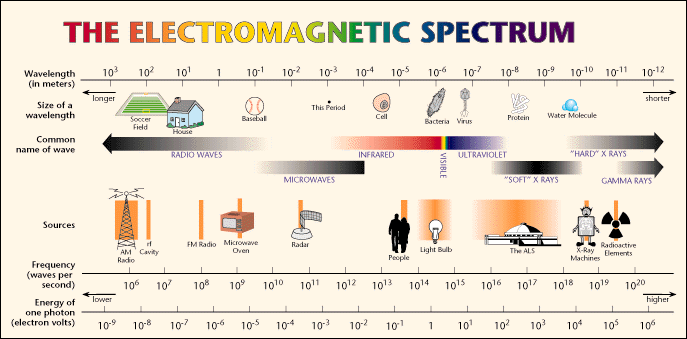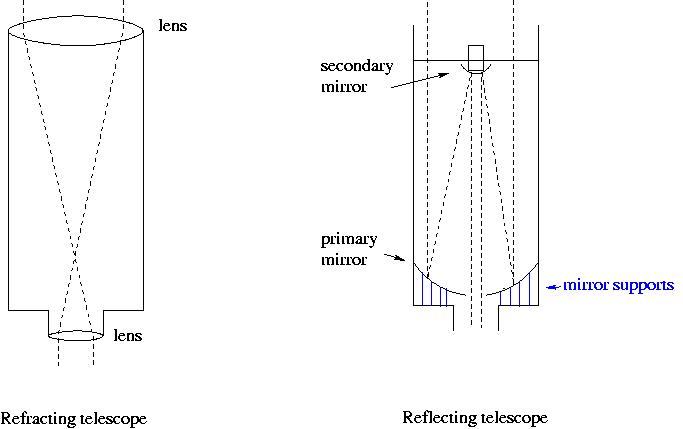In Class:
Question to Ponder
A "middle C" on a piano has a frequency of 256 Hz. If the speed of
sound is 330 m/s, what is the wavelength of these sound waves?
- a) 84480 m
- b) 1.29 m
- c) 0.78 m
- d) 330 m
- e) 74 m
So What is a Wave, Anyway?
- A disturbance in the medium
- The disturbance propagates at a well-defined speed, which is
determined by the properties of the medium.
- Wavelength is peak-to-peak (or valley-to-valley) distance.
Units are any length units.
- Frequency is how often (e.g., how many times per second), a peak
(or valley) passes by a particular point.
Units are "per second," called "Hz."
- Wavelength, frequency, and speed are related as follows:
wavelength x frequency = speed
Young Measures the Wavelength of Visible Light
- The pattern of interference that he sees in his two-slit
experiment depends on both the wavelength of the light and the spacing
between the two slits.
- Thus, he can measure the wavelengths of visible light.
- He finds that wavelength corrresponds to colour, and that
wavelength increases from that of blue light, through the colors of
the rainbow to red light.
- Blue light has a wavelength of about 400 nm (1 nm, or 1
"nano-meter" is one billionth of a meter (i.e., 1 nm = 1 x
10-9 m).
- Red light has a wavelength of about 700 nm.
- These are incredibly small wavelengths, so it's no big surprise
that no one notices the wave effects of light before Young.
Different Kinds of Light
- If light is a wave, why can't it have any old wavelength? I mean
why does it have to be between 400 nm and 700 nm?
- Light can have any old wavelength:

(Source: MicroWorlds -- Lawrence Berkeley Labs)
- Light waves range in wavelength from the very short (i.e., X-rays
and gamma rays) thourgh the optical, into the infrared, microwave, and
radio and TV.
- All are forms of light, and all move at the speed of light.
- From the wavelengths, we can get the frequencies of light:
For example, green visible light has a wavelength of 500 nm
Since wavelength x frequency = speed,
frequency = speed/wavelength
= 3 x 108 m/s / 500 x 10-9 m
= 5 x 1014 1/s = = 5 x 1014 Hz
- This is incredibly frequent! 1014 waves per second.
- No wonder people didn't recognize light as a wave.
Catching Light with Telescopes
- We need telescopes to help us collect the faint light from distant
celestial objects so that we can analyze the light and learn something
about the composition and state of the material.
- Telescopes help with both magnification and sensitivity.
- Though magnifacation (eg., making thisngs appear bigger) is good,
it's useless unless the resolution (i.e., "clearness") of the view is
comparably good.
- The aperture, or diameter of the telescope determines both the
sensitivity and resolution of the telescope -- bigger is better.
Types of telescopes
- Reflectors vs. refractors:

- Largest optical telescopes are now reflectors, because mirrors
are easy to support from behind (lenses can only be supported from the
edges, and really big lenses are so heavy that they sag under their
own weight).
- Really large mirrors are now constructed from mutiple segments of
mirror aligned very carefully.
|
![]()

